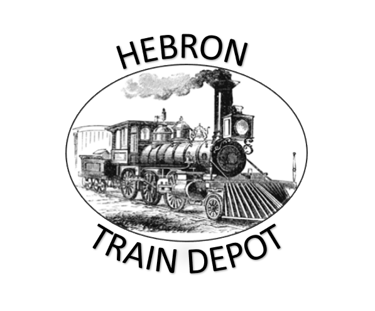
In 1890 the Baltimore, Chesapeake and Atlantic Railroad was extended from Salisbury to Claiborne. Six miles outside of Salisbury the line crossed over a county road where there stood only a country store and a colonial era house. The builders of the railroad designated here a shipping point and General Joseph B. Seth named the new town, Hebron, after the ancient Biblical city. The brief history of Hebron in regard to other surrounding communities should not persuade one to underestimate the long history of the area and the quick growth of Hebron gives an idea of how the lower Eastern Shore developed as a whole.
The town of Hebron is located at the axis of land between the Atlantic Ocean and the Chesapeake Bay. It was, as many small towns were and many still are, a collection of buildings amidst an expanse of farms and woodlands. The farms and woodlands around Hebron were first populated principally by Virginians who came to seek land and a closer proximity to northern markets. Some came to enjoy the greater religious freedom available in Maryland and some of the first to settle on the Wicomico River were Quakers after Virginia outlawed the religion in 1660, although, most settlers came for the fifty free acres given away by the Maryland Propriety government.
Hebron lies six miles from both Salisbury and Quantico, communities established in the pre-Colonial era. At the juncture of Route 50 and Route 147 there is Old Spring Hill Church built in 1725 and three miles south of Hebron on the Wicomico River there is Green Hill Church built in 1733 of brick brought from England. Both of these churches are Protestant Episcopal and predate the dominance of Methodism which was promoted in the area by the likes of Francis Asbury and George Whitefield.
While earlier towns sprang up on rivers, Hebron came about because of the railroad and to the immense effect that the railroad had on this area was added the automobile and improved farm machinery. By the 1920's Hebron was a hub for farming as well as manufacturing with major markets being easily and quickly accessible. In 1927 there were five shirt factories, a flour mill, a canning operation, a lumber mill, and a new high school under construction. There were large poultry and dairy farms joining the profitable farming of peaches, apples, strawberries, sweet potatoes, cucumbers, tomatoes, cantaloupes, and watermelons. The most prominent of these were the farms of B. Frank Adkins known as Neighbor's Wonder Farm, renowned for its herd of Guernsey cattle, the Oakdale Poultry Farm owned by J.T. Insley, and the farms of James A. Phillips and James Gordy. Notable citizens responsible for the manufacturing aspect of the town were Walter B. Miller and G.A. Bounds, the latter which owned both a lumber mill and canning plant and whose house still stands on Main Street today.
In 1927 Hebron had a population of 1100 people. Today the number is about the same though that figure is misleading since the town limits are quite small. Much of the farmland has been developed and trees are being cleared to put up more houses. The changing landscape of Hebron today is indicative of a larger phenomenon. Land is still cheap and plentiful but no longer is the main occupation agriculture and no more are manufacturing centers dependent on railroads and ready access to waterways. It is strange to talk about a quaint town of Hebron existing only ten years ago but anyone who has seen the extraordinary growth in that period of time knows that the pace of life Hebron has enjoyed since its inception is past. Some people who move to small towns like these sometimes frown upon the local mentality that pervades there, but one must realize that even to this day people still are born, live, and die in small towns on the Eastern Shore and their territorial mind set exists because they believe there are reasons to live where they do and these reasons are worth preserving. This territorialism has kept Hebron from becoming a strip-malled suburb of an expanding Salisbury. Hebron still offers seclusion and is still situated between two rivers and there is still enough prime land for farming and hunting. You can still find in Hebron the old fire house and the Hebron Savings Bank built in 1910 which now serves as the Town Hall. Nelson's United Methodist Church named after a family who donated land to the town has a very active membership. The tiny old train station is still there, though, boarded up and ignored by passers-by. Hebron does not preserve its history but instead lives its history, having to redefine itself but trying not to lose the quality of life which typifies the small towns of the Eastern Shore.
Train Depot History


